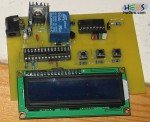
Liquid filler will be our first complete project here at hw2sw! 😎
We have made a series of articles that we will use in order to reach our goal.
Liquid filler is exactly as its name says, an really cheap but accurate liquid filling machine.
We need to auto-fill bottles with a certain capacity (50 up to 8500gr).
This arduino based project will permit to fill all containers with a certain, user defined, weight limit.
So the machine works on weight base and not on volume, flow or pressure base like other fillers.
Other than the machine you see in the photo, you need a weighting board that the bottle will sit on and a gravity feed valve that is piloted by liquid filler.
The present solution will weight containers up to 8,5 Kg.
...continue reading "Liquid Filling Machine – Liquid Filler Part 1"



